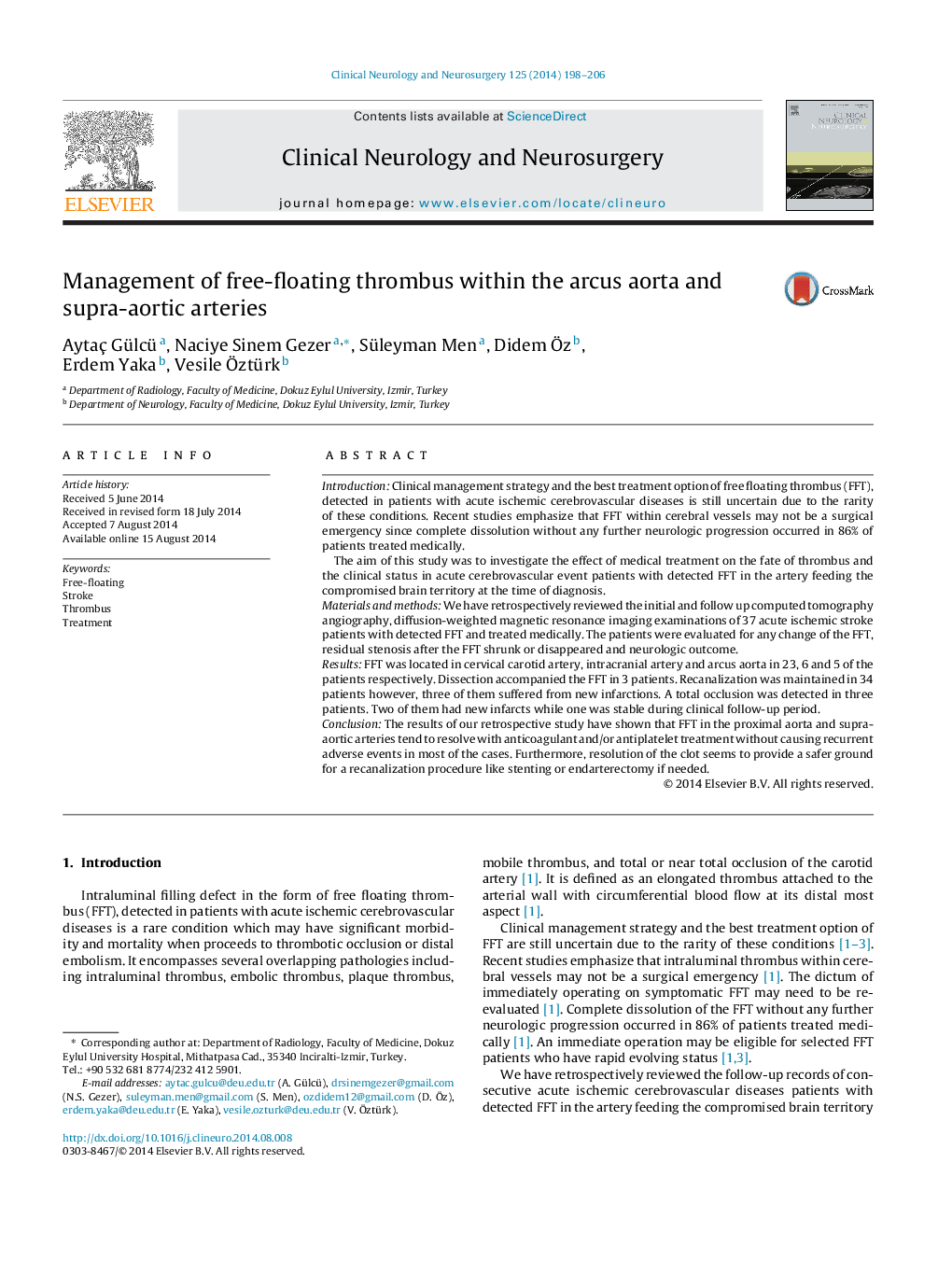| کد مقاله | کد نشریه | سال انتشار | مقاله انگلیسی | نسخه تمام متن |
|---|---|---|---|---|
| 3040226 | 1579697 | 2014 | 9 صفحه PDF | دانلود رایگان |
• Clinical management strategy and the best treatment option of FFT are still uncertain due to the rarity of these conditions.
• FFT within cerebral vessels may not be a surgical emergency.
• The frequency of FFT in the aorta and supra-aortic arteries of 872 patients presenting with acute ischemic stroke was 4%.
• Recanalization was maintained by medical treatment in 34 of 37 patients.
• Medical treatment of FFT in the aorta or supra-aortic arteries seems to be a safe approach before stenting or endarterectomy.
IntroductionClinical management strategy and the best treatment option of free floating thrombus (FFT), detected in patients with acute ischemic cerebrovascular diseases is still uncertain due to the rarity of these conditions. Recent studies emphasize that FFT within cerebral vessels may not be a surgical emergency since complete dissolution without any further neurologic progression occurred in 86% of patients treated medically.The aim of this study was to investigate the effect of medical treatment on the fate of thrombus and the clinical status in acute cerebrovascular event patients with detected FFT in the artery feeding the compromised brain territory at the time of diagnosis.Materials and methodsWe have retrospectively reviewed the initial and follow up computed tomography angiography, diffusion-weighted magnetic resonance imaging examinations of 37 acute ischemic stroke patients with detected FFT and treated medically. The patients were evaluated for any change of the FFT, residual stenosis after the FFT shrunk or disappeared and neurologic outcome.ResultsFFT was located in cervical carotid artery, intracranial artery and arcus aorta in 23, 6 and 5 of the patients respectively. Dissection accompanied the FFT in 3 patients. Recanalization was maintained in 34 patients however, three of them suffered from new infarctions. A total occlusion was detected in three patients. Two of them had new infarcts while one was stable during clinical follow-up period.ConclusionThe results of our retrospective study have shown that FFT in the proximal aorta and supra-aortic arteries tend to resolve with anticoagulant and/or antiplatelet treatment without causing recurrent adverse events in most of the cases. Furthermore, resolution of the clot seems to provide a safer ground for a recanalization procedure like stenting or endarterectomy if needed.
Journal: Clinical Neurology and Neurosurgery - Volume 125, October 2014, Pages 198–206
